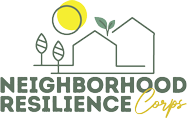Work with Us
We need visionary supporters, property owners, and volunteers to help us achieve our ambitious mission to rapidly adapt urban areas to thrive amidst climate change.

Support Our Work
Your donation directly supports our work to build stronger, more climate-resilient communities. Every contribution helps us protect ecosystems, advance clean energy solutions, and prepare vulnerable neighborhoods for the challenges of a changing climate. Together, we can reduce risks, create sustainable opportunities, and ensure a healthier planet for future generations. By giving today, you’re investing in a safer, more resilient tomorrow.

Improve Your Property
We will adapt your land by replacing water and pesticide intensive turf. Fill out the form to potentially have your property adapted with sustainable landscaping by our organization. In general, we are looking for properties in Denver that have at least 2,500 square feet of irrigated turf that could be replaced. If your property is a good fit, we will reach out!

Volunteer
We’re always looking for passionate student volunteers to join our efforts in tackling climate challenges. Whether it’s helping with local restoration projects, supporting community outreach, or assisting with research and advocacy, student energy and creativity make a powerful difference. Volunteering not only builds real-world skills and connections, but also gives students the chance to be part of meaningful, hands-on solutions for a healthier planet.
Our Projects & Programs
- DSST Elevate — 10825 E 47th Ave, Denver, CO 80239
- Denver Water — 5650 York St, Commerce City, CO 80022
- CSU Spur — 4777 National Western Dr, Denver, CO 80216
- 39th Avenue Greenway — 1777 E 39th Ave, Denver, CO 80205
What is Climate Adaptation?
Neighborhood Resilience Corps’ projects focus on these climate adaptation principles:
Waterwise
We all know water is a precious resource in Colorado and watering non-functional turf is wasteful.
Our projects can help reduce the need for irrigation by 50-80%.
Shaded
In urban areas, concrete, asphalt, and turf all accelerate the urban heat island effect by absorbing heat from the sun during the day, and releasing it back into the air at night, prolonging hot temperatures.
Our projects use trees and plants to provide shade for people, structures, and our built environment to cool everything down.

